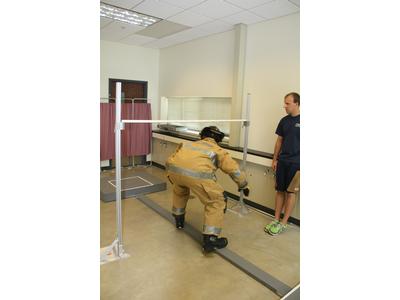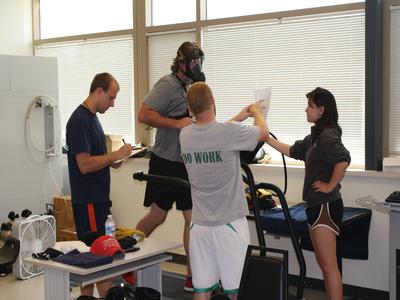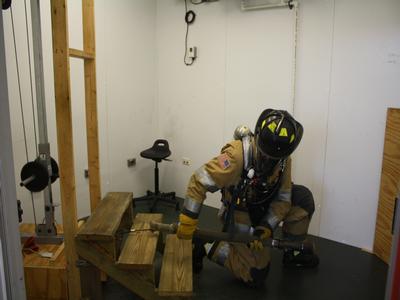Impact of SCBA Design & Fatigue on Balance, Gait and Safety of Movement
Funding provided by: Department of Homeland Security, United States Fire Administration - Assistance to Firefighters Grant Program: Fire Prevention and Safety Grant
In a typical year in the fire service, 25-30% of fireground injuries are a result of overexertion or strain according to the NFPA. An additional 20-25% of fireground injuries are the result of a slip, trip, and fall. The high levels of effort and exertion required for many fireground activities is further exacerbated by the firefighter’s turnout gear and self-contained breathing apparatus (SCBA). In recent years, the Fire Service has shifted toward extended duration SCBA, which provide more air but also are larger in size and weight and can provide extended operational timeframes.
Firefighters were recruited to take part in repeated-measures study to examine the effects of SCBA size as well as duration of firefighting activities on physiological strain, balance, gait, and safety of movement. Seven different conditions were studied including various SCBA (30, 45, and 60-minute standard cylindrical SCBA and a low-profile 45-min prototype) and durations of simulated firefighting (one or two bouts of activity). Firefighters also completed an obstacle course designed to test their gait and functional balance prior to, and immediately after the simulated firefighting activities.
Following firefighting activity firefighters had significantly elevated heart rates and core temperatures. The firefighters also generally performed worse in the obstacle course. The size of the SCBA alone had few impacts on the firefighters, decreasing performance on a Functional Balance Test with slight effects on gait and core temperature. However, when firefighters completed multiple bouts of simulated firefighting activity, heart rates and core temperatures were elevated relative to a single bout while the amount of work performed during each activity decreased. Performance during the obstacle course was also decreased following a second bout of activity more than after a single bout.
Related Projects
Files
| Fire Service Reports |
| Effect of SCBA Design & Fatigue on Balance, Gait and Safety of Movements |


